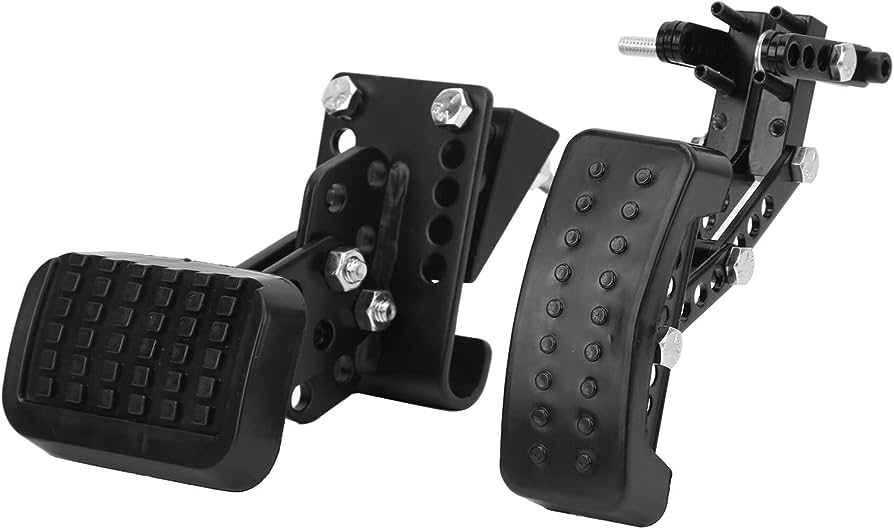Driving with worn-out or damaged brakes is not only a safety risk, but it can also create additional mechanical issues with your vehicle. Brake pads, brake rotors, and calipers should all be replaced at regular intervals (usually between 25,000 to 70,000 miles for brake pads) to decrease the likelihood of potential brake issues, which, depending on the severity, could cost up to $1,000 to repair.
If you don’t replace the brake pads, you run the risk of causing further damage to the rotors and calipers. The vehicle’s tires may also experience wear and imbalance, partly attributable to the additional force exerted on the brake pedal.
To avoid additional unnecessary damage to your brakes and other components of the vehicle, along with high repair costs, familiarize yourself with these five common problems that suggest an issue with the brakes.
1. Lack of Pedal Resistance
There should be some resistance when you press on the brake pedal. If you’re able to push the pedal all the way to the floorboard with no resistance or you notice the brakes feel soft or spongy, you should immediately bring the car to a mechanic because this could indicate an internal or external leak in the braking system, usually the master cylinder. An external leak in the brake fluid reservoir is easy to address, whereas an internal leak means you will have to replace the master cylinder.
First, check the levels of the brake fluid reservoir under the hood of the vehicle. Pour brake fluid into the reservoir until it reaches maximum capacity. If the fluid holds resistance and you can’t find any sign of a leak, then the issue is an internal leak in the master cylinder.
2. Squeaking or Grinding Sounds
Any noise coming from the front of your car, especially when pushing on the brake pedal, is likely because of faulty brakes. Unusual sounds, including grinding or squeaking, could indicate damage to the brake lining, springs, pads, or drum. These sounds may also occur because of loose wheel bearings or parts that have been incorrectly installed.
The best-case scenario for grinding sounds is that there’s gravel or debris caught in the caliper unit, which can be easily addressed. If that’s not the case, it may be time to repair the brake pads. The longer you go without doing so, the greater the risk you run of causing additional damage to the brake rotor.
3. Vibrating Steering Wheel
A steering wheel that vibrates when you apply the brake pedal usually suggests a problem with a front component of the vehicle. Often, this vibration is caused by the gradual wear and tear of brake pads, which can result in uneven contact, forming tiny peaks and valleys on the rotor over the course of several years. Without a flat contact surface on the rotor, the brake pads will oscillate and cause the steering wheel to vibrate. The vibration will gradually become more noticeable over time if left unaddressed.
Fortunately, repairing the surface of an uneven rotor is a relatively cheap job. Some mechanics offer rotor resurfacing for as little as $10 a rotor. Moreover, if you’re familiar with rotors and own a brake lathe machine, you can do the job yourself as long as there’s enough material to cut without the rotor reaching its minimum width. Otherwise, you’ll need to replace the damaged rotor.
4. Leaking or Low Brake Fluid
Brake fluid plays a vital role in maintaining the health of your vehicle’s brakes. It serves as a lubricant, preventing corrosion in various brake components, and enhances the braking force of the car.
Brake fluid can deteriorate over time since it soaks up water from the parts it lubricates. This, in turn, makes the brakes less responsive. You may notice signs of a leak under the vehicle when parked or detect a lack of pedal resistance. A leak will need to be repaired, but you can top up the reservoir yourself if the problem is just low fluid.
Generally, you should replace the brake fluid in your vehicle every two years. This differs from topping up the brake fluid reservoir and is done to eliminate vapor or bubbles that could be lodged in the braking system. Because specialized equipment is required to “bleed” the brakes, it’s best to have a mechanic perform this task.
5. Car Pulls to the Side
If your car is pulling to one side, the problem could be a faulty master cylinder or proportioning valve, broken belts, or worn-out front tires, but the most likely culprit is a frozen caliper. The caliper unit, which features brake pads and pistons, rubs against the rotors to slow the car’s wheels. This can freeze up over time due to a variety of reasons, such as a stuck piston or water and debris causing rust and corrosion. The car will then pull to one side because of uneven pressure on the brake pads.
You can lubricate and clean the caliper unit yourself using a special maintenance kit, but your best bet is to have a mechanic repair or replace the caliper.
